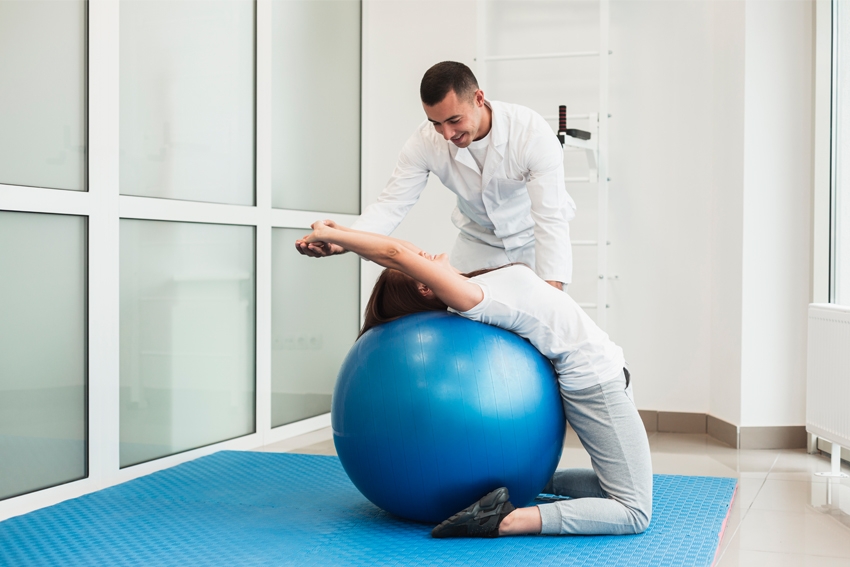You may know that physical therapy helps in the treatment of low back pain, but did you also know that physical therapy can help treat conditions such as spinal stenosis? Spinal stenosis is a condition in which the space surrounding the spinal cord is reduced, leading to increased pressure on the spinal cord and its network of nerves.
Early signs of spinal stenosis often appear on an x-ray, even though no other symptoms are present. The symptoms begin with an occasional twinge or pain in the neck and spine. As the condition progresses, patients experience increased pain, numbness, and muscle weakness. Bowel function and incontinence may also occur.
While some individuals are born with smaller spinal canals, many factors can lead to spinal stenosis. Trauma and injury to the spine, thickened ligaments, herniated discs, tumors and the growth of bone spurs can narrow the available space in the canal. It typically affects patients over the age of 50 but is considered a genetic disease when it affects younger people. As a rule, persistent pain, numbness or weakness in the back, arms or legs should be reported to a physician or physical therapist as quickly as possible.
Benefits of Physical Therapy
Left untreated, spinal stenosis can progress and lead to severe limitations ranging from incontinence to possibly paralysis. Surgery may be required. Physical therapy helps in recovery and rehabilitation following surgery. Therapy can be a stand-alone treatment without surgery.
Three Main Advantages of Therapy in Spinal Stenosis
- Release of pressure in the spinal canal – Exercise under the supervision of the physical therapist is the key to relieving pressure in the spinal canal. Clinical Pilates includes customized stretching and exercise programs to relieve pain, maintain flexibility and strengthen the body. All patients learn optimal ways to maintain movement and relieve joint stress.
- Improvement in spinal mobility– The use of skilled manual techniques by the therapist help increase motion in the joints in the vertebral column. Joints commonly 'lock down' and a variety of techniques can be used to increase joint motion.
- Pain relief and muscle relaxation– The use of heat, massage and even water as a medium for exercise can relieve pain and help reduce muscle spasm. A physical therapist will use a variety of techniques to create a calming environment for muscles and joints. This helps reduce pain and increase the strength of muscle contractions during recovery. Ultrasound waves may be used to relieve pain and improve blood circulation.
If you or someone you know is experiencing numbness, tingling or pain in the neck or spine, call us right away. We can help with a variety of techniques to accommodate your individual needs. Your spine is critical for all your day-to-day activities, and we will always strive to make you healthy and pain-free.


